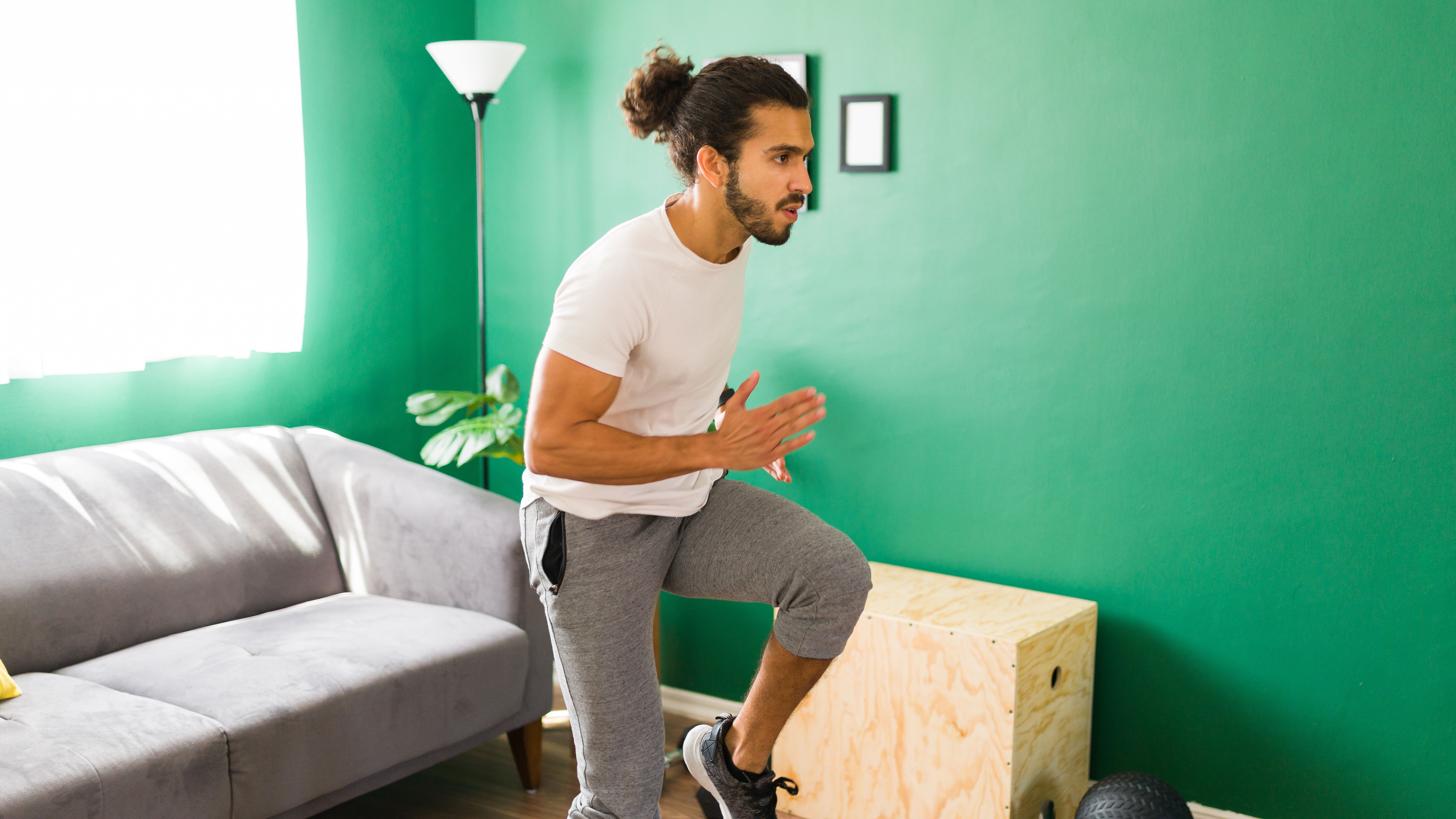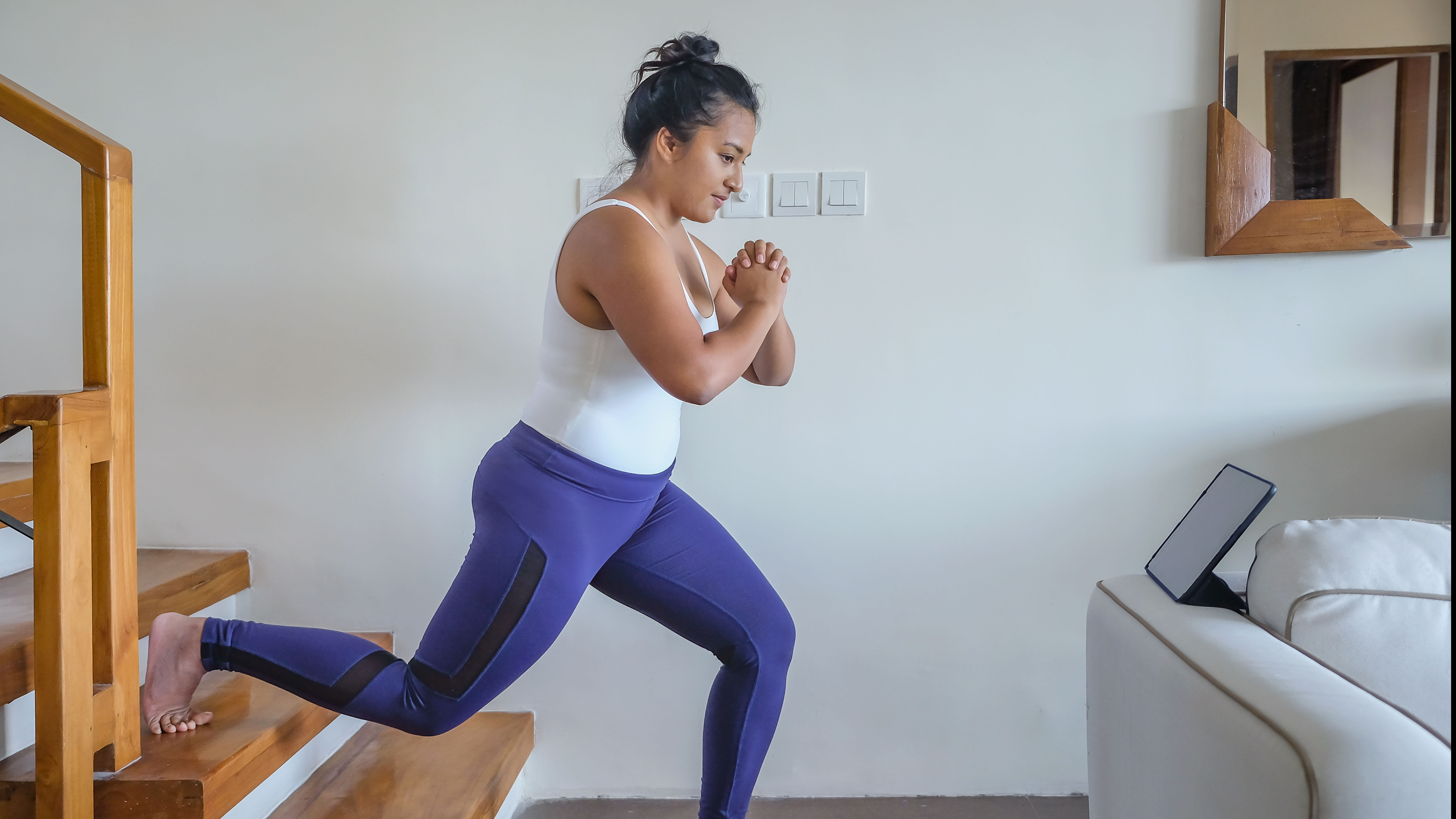What is Tabata training?
What is Tabata training, how does it differ from HIIT exercise and can it improve performance?

Used by elite athletes in Olympic-level sports, Tabata training is a form of HIIT training that Izumi Tabata developed at the National Institute of Fitness and Sports in Japan in the early 1990s. He and his team studied groups of people doing moderate- and high-intensity exercises. They found that short bursts of high-intensity training were better for strengthening muscles and burning fat than more extended periods of moderate-intensity activity. The result was a form of high-intensity interval training called Tabata, featuring shorter exercises and rest periods.
We’ve taken a deeper dive into the research and talked with Izumi Tabata, as well as an exercise specialist, to find out what the training involves.
What is Tabata training?
"Tabata training is a unique form of HIIT because of its structured interval times of 20 seconds of intense exercise followed by 10 seconds of rest in a four-round cycle," says John Solle, a Noom coach, personal trainer and corrective exercise specialist.
"A traditional Tabata workout is a 20-minute workout consisting of four rounds of an 8-set interval of 20 seconds of exercise and 10 seconds of rest totaling four minutes of exercise. There is a one-minute rest between rounds for recovery."

Noom Coach John Solle is a personal trainer and corrective exercise specialist, certified by the National Academy of Sports Medicine (NASM). He’s also a certified nutrition coach. He works with a wide range of clients to help them reach their personal health goals, whether that be weight loss or improving athletic performance.
Despite being much shorter in time than regular moderate-intensity exercise, research has found that Tabata increases overall fitness in a similar manner. For example, in a 2013 study published in PLoS One, people who did one intense four-minute burst on treadmills at 90% of their maximum heart rate, three times a week, increased their cardiorespiratory fitness by 10%.
So how does Tabata training differ from HIIT? HIIT is generally less rigid in terms of the workout structure. Bursts of energetic activity can last anywhere from 10 to 60 seconds, while rest periods can also vary. Whereas Tabata allows entire rest for 10 seconds, HIIT may employ low- to moderate-intensity exercises as a form of rest.
If you want to track your energy expenditure during a session, we'd recommend investing in one of the best budget fitness trackers. These cheap devices can help you monitor your heart rate and exertion during an intense workout, which is useful for monitoring progress.
Get the world’s most fascinating discoveries delivered straight to your inbox.

The benefits of Tabata training
The American College of Sports Medicine (ACSM) says that any form of HIIT can improve aerobic and anaerobic fitness, lower blood pressure, improve cardiovascular fitness and help with general body composition. It can also increase insulin sensitivity (which helps muscles use glucose for fuel to make energy) and lower your cholesterol.
A review of Tabata training by the ACSM’s Health & Fitness Journal also points out that Tabata training increases the body’s capacity to burn fat, even at rest, because the body uses insulin more effectively to fuel muscles.
Moreover, it doesn’t require gym equipment. You can use your own body to provide resistance in the form of burpees, squats, lunges, push-ups and crunches. Plus, it’s a time-efficient way to workout.

So what does the originator of Tabata, Dr. Izumi Tabata, have to say about it? "Tabata training is scientifically proven to be one of the most effective exercises to improve both aerobic and anaerobic energy releasing systems," he told us. "The authentic Tabata training is exhaustive."

Izumi (Joseph) Tabata (田畑 泉) is a widely respected health and exercise scientist, who is often credited with the creation of the ‘Tabata’ exercise regime. He was educated in Japan and Norway, and studied for a year at Washington University in St. Louis, prior to taking tenure at Ritsumeikan University. He has also worked at the National Institute for Health and Nutrition in Japan, and with the Japanese speed skating team. Over the course of his career, he has contributed to several influential research papers and changed the dialogue around exercise.
The cons of Tabata training
"Tabata training is a challenging workout that requires a certain base fitness level to complete," says Solle. "Since it is so hard, it will take a fair amount of mental toughness and energy to complete. In addition, all high-intensity workouts come with a risk of injury that should be assessed before starting a new regime."
If you’re not sure about your base level of fitness, it may be worth speaking to a personal trainer to find out whether you’re ready for Tabata training before you jump in at the deep end.
"Tabata training is safe for most people," says Solle. "However, if you’re pregnant or you have a heart condition, high blood pressure, injuries or other health conditions, you should consult your doctor before engaging in any type of HIIT like Tabata."
To keep injury risk low, the Cleveland Clinic advises starting with just one or two four-minute rounds to see how you get on with their intensity, then adding more as your fitness improves.
15-minute Tabata training workout
Solely has devised two sample Tabata routines for Live Science, each lasting 15 minutes. The first uses just one exercise, and no gym equipment, while the second adds a little variety to the exercises and requires kettlebells or similar weights.

Tabata also offers a more general Tabata routine to follow, and recommends doing it twice a week for six weeks to see improvements in aerobic and anaerobic fitness.
"The recommended length of Tabata training is 20 minutes," says Solle. "But this can be shortened by reducing the number of rounds or cycles." Solle also advises starting with a 15-20 minute warm-up of cycling, walking or jogging "to help prepare the body and mind for the workout."
Sample 1 exercise routine:
- Burpees: 8 sets of 20 seconds with 10 seconds of rest, totaling four minutes, with one minute of rest between rounds. Three rounds would equal 15 minutes.
Sample 2 exercise routine:
- Mountain Climbers: 8 sets of 20 seconds with 10 seconds of rest, totaling four minutes.
- One minute of rest
- Squat Jumps: 8 sets of 20 seconds with 10 seconds of rest, totaling four minutes
- One minute of rest
- Kettlebell Swings: 8 sets of 20 seconds with 10 seconds of rest, totaling four minutes
- One minute of rest
Dr. Izumi Tabata’s simple training workout:
- Dr Tabata recommends warming up for five minutes either by cycling or using a variety of body weight-bearing exercises, such as press-ups or burpees.
- 8 x 20-second training bouts, performing as many body-weight bearing exercises as possible within the 20 seconds, broken up by 10-seconds of total rest.
- Five minutes of cooling down exercises with stretching.
This article is not meant to offer medical advice and readers should consult their doctor or healthcare professional before adopting any diet or exercise regime.
Joanne Lewsley is a UK-based freelance writer and editor, covering health and lifestyle news and features. She mainly creates evidence-based health and parenting content and has worked with a number of global sites, including BabyCentre UK, Medical News Today, Fit & Well, Top Ten Reviews, and Yahoo!



